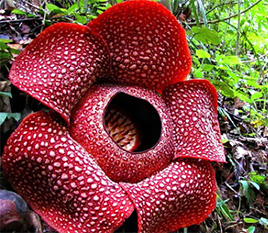Tropical rainforests took between 60 and 100 million years to evolve and are believed to be the oldest and most complex land-based ecosystem on earth, despite only covering around 6% of the earth, it contains over 30 million species of plants and animals. That’s half of the Earth’s wildlife and at least two-thirds of its plant species!
Our Rainforest
What is a Rainforest?

The Four Layers of the Rainforest
The typical rainforest contains a total of four layers. The Emergent layer holds the tallest trees. Trees in the emergent layer can grow to heights of up to 200 feet with trunks measuring up to 16 foot in width. The Canopy layer is the primary rainforest layer that protects the other layers and offers beautiful oval and smooth pointed leaves. The Understory layer has very little sunshine and plants are usually those with larger leaves. The final layer is the forest floor layer which is dark and contains very few plants. Decay is common in this level of the rainforest.
Why are Rainforest so Important?

Rainforest PROVIDES A HABITAT FOR PLANTS AND ANIMALS. One hectare of lowland rainforest may contain 1000 trees with up to 300 species. These plants in turn provide food and shelter for many rare animals that depend on the rainforest for their survival. There are many more thousands of rainforest plants and animals species still waiting to be discovered. Rainforests REGULATES OUR CLIMATE by continually recycling huge quantities of water, feeding the rivers, lakes and irrigation systems. The plants in rainforests absorb the carbon dioxide that we exhale, and provide the oxygen we need to breathe. Rainforests HELPS TO PREVENT SOIL EROSION as tree roots bind the soil together, while the canopy protects the soil from heavy rains. Rainforests PROVIDES A HOME FOR INDIGENOUS PEOPLE as many indigenous people have been living in harmony with the rainforest for thousands of years, depending on it for their food, shelter and medicines. RAINFOREST acts as a PHARMACY as more than 25% of our modern medicines originate from tropical forest plants and we have only learned how to use 1% of these amazing plants. Many foods we consume today such as nuts, bananas, coffee and spices, and industrial products such as rubber, resins and fibres, were originally found in tropical rainforests.
Why are Rainforests Disappearing?
Scientific evidence suggests that, unless we make changes right away, rainforests will no longer be a part of our world in another 100 years or so. The world’s rainforests are currently disappearing at a rate of 6000 acres every hour (this is about 4000 football fields per hour). When these forests are cut down, the plants and animals that live in the forests are destroyed, and some species are at risk of being made extinct.
We NEED to do our part to save the ONLY Earth that we have. One of the types of trees that are facing the threats of being made extinct is Agarwood. If mankind wants to continue to enjoy the enjoyment provided by Agarwood, we have to make the effort to develop the Agarwood trees industry.

